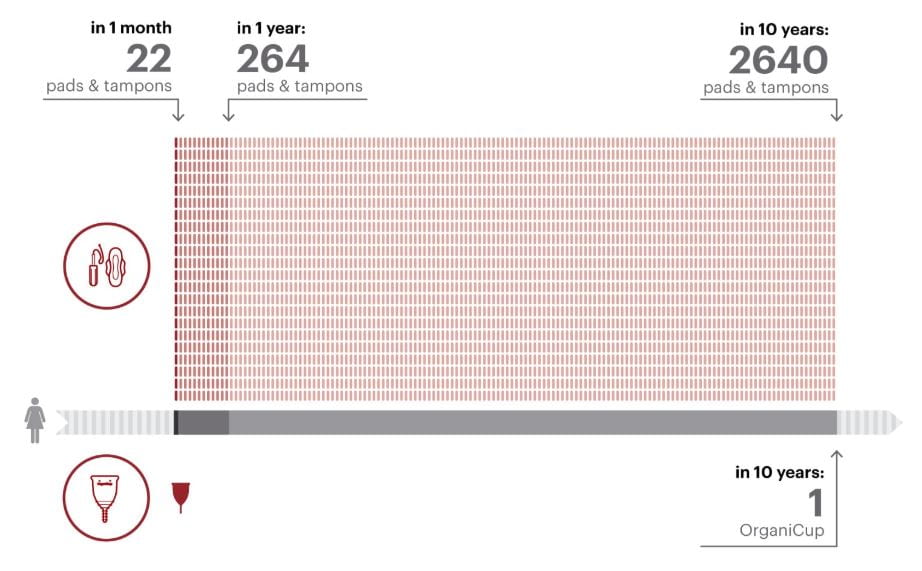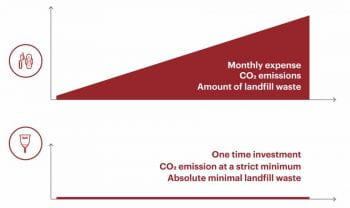For about half the human population, menstruation is, or has been, a monthly part of life. But for many, adequate period management is still beyond reach. Unicef reports that 2.3 billion people around the world lack access to basic sanitation services, like clean running water and soap, which are essential to keep healthy while on one’s period. In 2019, Reuters found that 64% of low-income women in St. Louis had to go without period products, forcing them to deal with discomfort, poor hygiene, and infections.
Contributing to this public health issue is the fact that menstruation has long been absent from public dialogue. Up until the later years of the twentieth century, periods were only really discussed among women, severely limiting the amount of resources available to those who menstruate. The stigma that inhibited the development of menstrual products is still with us– we are only just starting to have open conversations about how periods affect us and how we handle them.
As discussed in “A short history of modern menstrual products,” disposable period products as we know them came into the picture in the 1930s. Before that, people relied on rags, early menstrual cups made of hard rubber, and bandages. Since then, the menstrual product industry has grown substantially and countless of brands and products are now available to menstruators who can afford it. Because of the taboo nature that many still associate with periods, disposable single-use products are most widely used, resulting in many environmental and health drawbacks.
In the past few years, thanks to the leadership of empowered feminists looking to redefine the quality of menstrual products while taking down the stigma of periods, the reusable menstrual products movement has rapidly grown. Reusable cloth pads, period underwear, menstrual disks, menstrual cups, sea sponges, and many more options are now available.
Environmental impact of period products
Data from the Harvard Business School shows that after menstruating monthly for around thirty-eight years, the average user discards around 11,000 tampons alone, creating around 331 pounds of waste in their lifetime. For the United States alone, that translates to around 12 billion pads and 7 million tampons ending up in landfills.
That’s not it, though. It may take around 800 years for those disposable products to decompose. In the meantime, those harmful plastics find their ways into waterways, oceans, and ultimately the food chain. To make these products, used for just a few hours before being discarded, factories pump CO2 into the atmosphere and fields of cotton require extensive watering.

[Source: organicup.com]
Save money by choosing reusable
Period management, birth control, and health care represent significant and ongoing expenses for women. Jezebel estimates that each woman using pads and tampons spends approximately $5,600 on her period over her lifetime.

[Source: organicup.com]
Health implications of tampons vs cups
There is growing concern about the synthetic chemicals contained in traditional period products. Pads and tampons are made of bleached cotton and/or rayon and, like many other personal care products, are likely to contain “endocrine disruptors”. Experts and scientists have been urging the FDA and the industry to increase research and transparency on the health impact of tampons.
Sustainable menstrual products have not been flagged as less healthy than their disposable counterparts. In fact, some consider them to be much healthier, due to the lack of synthetic fibers. A comprehensive analysis published in The Lancet Public Health in July of 2019 finds that menstrual cups are perfectly safe to use.
Though they do take some getting used to, they are a hygienic option and standard washing (for cloth pads) and boiling (for silicone cups) eliminate all odors and potential discomfort. In fact, the Lancet study finds that many of the people who give menstrual cups a try actually like them. “Of the participants, 73% of women and girls reported a willingness to continue with the menstrual cup after learning how to use it and trying it out for several menstrual cycles.” It’s now your turn to give it a try if you haven’t already!
***Note: as new products are quickly coming on the market and as the science of their health impacts is ever evolving, we encourage you to spend some time researching products before buying to ensure that your choice is well informed and best suited for you.
Further reading:
- Alternative Period Products – WashU Campus Well (SHS)
- Menstrual Cups: Study Finds They’re Safe To Use — And People Like Them – NPR
- Powerful Environmental Reasons To Switch To A Menstrual Cup – Organicup
- Women Spend Hundreds of Extra Dollars Per Year. Here’s One Easy Out. – Groundswell
- 3 Reusable Menstrual Products to Try for a More Eco-Friendly Period – Allure
- I Started My Period And Snapped A Reusable Menstrual Pad Onto My Underwear To Try It Out – Little Things
- Disposable tampons aren’t sustainable, but do women want to talk about it? – The Guardian
This article was written by Natalie Snyder, Communication Associate at the Office of Sustainability.
